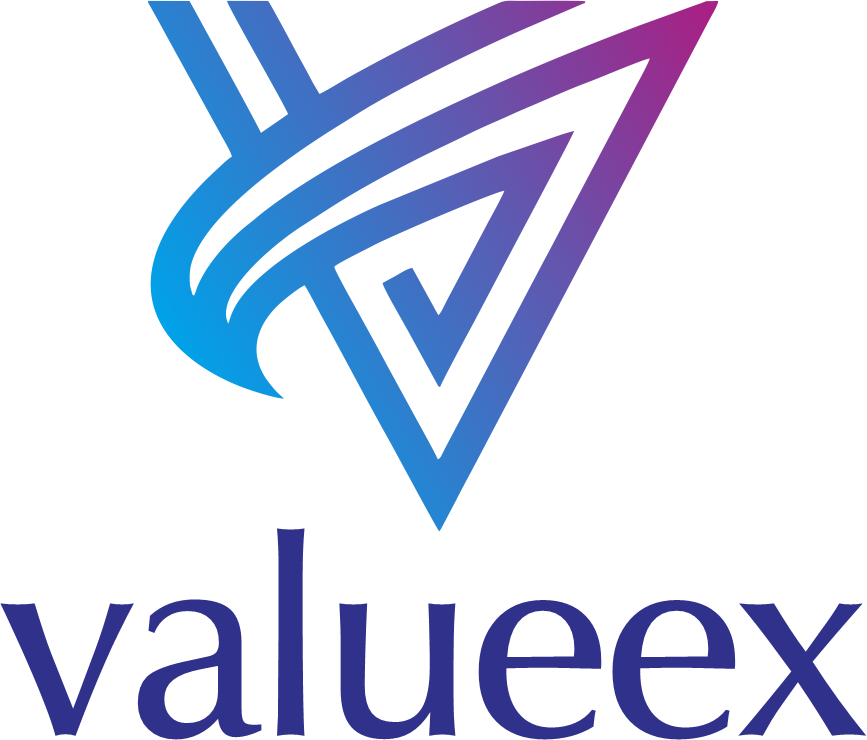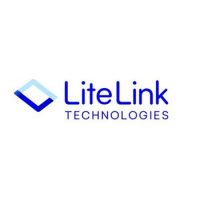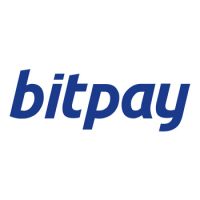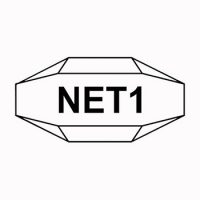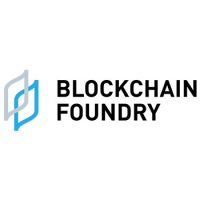Blockchain
RETRANSMISSION: HIVE Blockchain Provides December 2022 Production Update
This news release constitutes a “designated news release” for the purposes of the Company’s prospectus supplement dated September 2, 2022 to its amended and restated short form base shelf prospectus dated January 4, 2022.
Vancouver, British Columbia–(Newsfile Corp. – January 9, 2023) – HIVE Blockchain Technologies Ltd. (TSXV: HIVE) (Nasdaq: HIVE) (FSE: HBFA) (the “Company” or “HIVE”) is pleased to announce the production figures from the Company’s global Bitcoin operations for the month of December 2022 and the calendar year 2022, with 213.8 Bitcoin produced in December, plus USD $3.15 million of income from our energy price hedging and grid balancing strategy. Additionally, the Company produced crypto assets with a value of 4,752 Bitcoin (based on daily average price of Bitcoin) in 2022, which is an 18% increase from the prior year.
Summary Overview:
- HIVE produced 213.8 Bitcoin in the month of December, from ASIC and GPU mining operations, representing an average of 113.2 Bitcoin Per Exahash.
- HIVE earned USD $3.15 million in income from our energy price hedging and grid balancing strategy, in addition to Bitcoin produced in December. Based on the daily Bitcoin prices during the month of December, the income from grid balancing could equate to a mined value of approximately 184 Bitcoin.
- HIVE’s strategy to improve its global efficiency was achieved by the agile acquisition of 3,570 Bitmain S19j Pro at prices steeply discounted from the previous year. In addition, HIVE is pleased to deploy its own ASIC Bitcoin miner system for Proof of Work, the ‘HIVE BuzzMiner’, in partnership with Intel.
- As a tactical update, in the last two weeks HIVE has received and installed over 3,400 new generation Bitcoin ASIC miners in the 100 TH/s to 110 TH/s range, which is a massive efficiency upgrade which will lower the Company’s average cost of producing Bitcoin and improve gross mining margins.
- HIVE has installed approximately 2,050 of the 3,570 Bitmain S19j Pro miners announced on December 22, 2022. These machines arrived in the last week of December, and HIVE’s team expects all 3,570 S19j Pro miners to be installed on or around January 13, 2023. The installation of these machines includes an optimization process to ensure HIVE has distributed and installed the most efficient machines across its global operating fleet, thus increasing the Company’s overall average Bitcoin mining efficiency and lowering the average Bitcoin cost of production.
- Additionally, HIVE has received and installed 1,423 of its HIVE BuzzMiner Bitcoin miners, powered by Intel Blockscale, out of the total production quantity of 5,800 HIVE BuzzMiners. These new generation ASIC miners, will replace older legacy ASIC and GPU mining equipment, to increase Bitcoin mining efficiency.
December 2022 Production Figures
HIVE is pleased to announce its December 2022 production figures and mining capacity:
- 212 Bitcoin Produced from ASIC mining operations;
- 2.06 Exahash of Bitcoin mining capacity at the end of December, with an average hashrate of 1.89 Exahash of Bitcoin mining capacity during the month of December from ASIC mining operations, with an average of 113.2 Bitcoin per Exahash;
- An additional 1.4 Bitcoin were mined by our GPUs in December.
Frank Holmes, Executive Chairman of HIVE stated, “We are very happy to be producing over 213 Bitcoin this month, while also earning over USD $3 million this month from our grid balancing and energy sale initiatives. HIVE was the first public crypto mining company to set up an energy price hedging and grid balancing strategy. Our strategy to manage volatile energy prices and provide a standby agreement with the utility company has been active for the past couple of years in Sweden. HIVE is a key player in the great digital transformation wave, from being the first public company to mine digital assets, to having a green strategy, and to innovate with additional revenue streams. Our agile leadership style is focused on being innovative and quick to pivot since we mine digital assets that are extremely volatile. In addition to the European partnerships we have, our internal technical team has developed proprietary software to manage our fleet of ASIC miners across 3 countries.”
Aydin Kilic, President & COO of HIVE noted “Additionally, our technical team has updated our software stack which monitors the vital statistics of our global fleet of ASIC miners. This allows us to have great insight and granularity into the performance of each machine, using bespoke API calls, as we carefully study the overall fleet efficiency (in Joules per Terahash), to ensure we are mining for maximum profitability during a Bitcoin bear market. We continue to strive for excellence, ensuring that as we scale our hashrate we also optimize our uptime, to ensure ideal Bitcoin output figures and leading the sector in performance.”
The Company’s total Bitcoin production in December 2022 was:
- 213.8 BTC Produced
- 6.9 BTC produced per day on average
- 2.06 Exahash of BTC Hashrate (BTC ASIC Hashrate plus BTC GPU Hashrate) as of December 31, comprised of 2.06 Exahash of BTC ASIC Hashrate and 0.0 Exahash of BTC GPU Hashrate (the GPU fleet was curtailed to earn income for grid balancing), with a monthly average of 1.89 Exahash, which is equal to 113.2 Bitcoin per Exahash.
2022 Annual Production Figures
In calendar year 2022 HIVE mined digital assets equivalent in value to 4,752 Bitcoin (based on the daily average Bitcoin price; these digital assets include 3,146 Bitcoin). This represents an 18% year over year increase in digital assets mined by the Company (HIVE mined digital assets equivalent in value to 4,032 Bitcoin in 2021).
For the three-month period ended December 31, 2021, HIVE produced 697 Bitcoin, or approximately 7.7 Bitcoin per day, and today HIVE is producing approximately 8 Bitcoin per day from ASIC production.
While this appears to be a modest increase, the Bitcoin Network Difficulty has surged by 46% in this one-year period which would reduce Bitcoin production by 46% all other things being equal.
Notwithstanding the foregoing, as HIVE’s global fleet of ASIC and GPU miners expanded, HIVE’s output of crypto mined with green energy, outpaced the Bitcoin Network Difficulty increase.
The increased mining difficulty is a major headwind to profit margins. The only way to stay ahead is to acquire more machines (to increase HIVE’s Petahash) which are also more efficient.
The Company has received 3,570 Bitmain S19j Pro miners, and 1,879 of the HIVE BuzzMiners. Additionally, 987 HIVE BuzzMiners were shipped to Sweden, and are expected to arrive on or around January 15. HIVE expects all of the 5,800 HIVE BuzzMiners to be manufactured, tested and shipped by the end of January 2023.
Bitcoin HODL Update
As of today’s date, HIVE maintains in its treasury 2,348 Bitcoin, with a market value of over USD $38 million.
Last quarter HIVE strategically sold Bitcoin to increase cash reserves to fund opportunistic expansions in the technology bear market. Mr. Holmes stated “We have seen a great opportunity to expand in this depressed market, where ASIC prices are down almost 90%, whereas Bitcoin price is down approximately 70%. Acquiring ASICs at steeply discounted prices positions us for ideal return on invested capital, and further decreases our cost of production for Bitcoin, and improves our gross mining margin in the interim bear market.”
HIVE notes that in the crypto mining sector, different companies have different strategies for HODLing or selling Bitcoin. Some companies may employ a 100% HODL strategy, and not sell any Bitcoin, instead opting to sell shares to cover operating costs and/or capital expenditures. Other companies may elect to sell all of their mined Bitcoin to fund operating costs and/or capital expenditures. HIVE has a unique hybrid strategy and may elect to sell digital assets where the Company believes there are attractive opportunities to scale the business. Our flexible HODL strategy has always allowed us to have a core investment in digital assets on HIVE’s balance sheet.
Bitcoin Global Network Mining Difficulty Remains Volatile
Network difficulty factors are a significant variable in the Company’s gross profit margins and can also be volatile. For example, the Bitcoin network difficulty was 36.95T as at December 1, and decreased to 34.24T as at December 6, then increased to 35.36T on December 19, and remained at this level until the end of the month. Accordingly, Bitcoin mining difficulty ended the month about 4.5% lower than the beginning of the month.
The Bitcoin Network Difficulty is a publicly available statistic, that reflects the total number of Bitcoin miners online and is important in analyzing a company’s gross profit margins, and number of Bitcoin produced. This data is available on many websites, here is one citation: https://www.blockchain.com/explorer/charts/difficulty
As more people mine Bitcoin, difficulty increases and conversely, as Bitcoin prices fall, many miners may lose money, and power down, thus taking their hashrate off the network, causing Network Difficulty to decrease.
Those with the lowest costs of production; by virtue of having more efficient machines and/or lower energy costs, can continue their production during these volatile cycles. Consequently, not all miners may continuously mine during the month, as a result some miners will produce less Bitcoin than expected, relative to their advertised hashrate.
We are pleased that we have been able to upgrade our global fleet during this period of turbulence amidst the “crypto contagion” without borrowing expensive high yield debt against our ASIC equipment and digital assets, whereas such expensive debt has hurt many Bitcoin miners during this bear market.
About HIVE Blockchain Technologies Ltd.
HIVE Blockchain Technologies Ltd. went public in 2017 as the first cryptocurrency mining company with a green energy and ESG strategy.
HIVE is a growth-oriented technology stock in the emergent blockchain industry. As a company whose shares trade on a major stock exchange, we are building a bridge between the digital currency and blockchain sector and traditional capital markets. HIVE owns state-of-the-art, green energy-powered data centre facilities in Canada, Sweden, and Iceland, where we endeavour to source only green energy to mine digital assets such as Bitcoin on the cloud. Since the beginning of 2021, HIVE has held in secure storage the majority of its treasury of ETH and BTC derived from mining rewards. Our shares provide investors with exposure to the operating margins of digital currency mining, as well as a portfolio of cryptocurrencies, primarily BTC. Because HIVE also owns hard assets such as data centers and advanced multi-use servers, we believe our shares offer investors an attractive way to gain exposure to the cryptocurrency space.
We encourage you to visit HIVE’s YouTube channel here to learn more about HIVE.
For more information and to register to HIVE’s mailing list, please visit www.HIVEblockchain.com. Follow @HIVEblockchain on Twitter and subscribe to HIVE’s YouTube channel.
On Behalf of HIVE Blockchain Technologies Ltd.
“Frank Holmes”
Executive Chairman
For further information please contact:
Frank Holmes
Tel: (604) 664-1078
Neither the TSX Venture Exchange nor its Regulation Services Provider (as that term is defined in policies of the TSX Venture Exchange) accepts responsibility for the adequacy or accuracy of this news release.
Forward-Looking Information
Except for the statements of historical fact, this news release contains “forward-looking information” within the meaning of the applicable Canadian securities legislation that is based on expectations, estimates and projections as at the date of this news release. “Forward-looking information” in this news release includes, but is not limited to, business goals and objectives of the Company; the ability of the Company to adapt its operations as a result of the Merge, the continued viability of its existing Bitcoin Mining operations, the results of the ATM Equity Program, and other forward-looking information concerning the intentions, plans and future actions of the parties to the transactions described herein and the terms thereon.
Factors that could cause actual results to differ materially from those described in such forward-looking information include, but are not limited to, the volatility of the digital currency market; the Company’s ability to successfully mine digital currency; the Company may not be able to profitably liquidate its current digital currency inventory as required, or at all; a material decline in digital currency prices may have a significant negative impact on the Company’s operations; the volatility of digital currency prices; continued effects of the COVID-19 pandemic may have a material adverse effect on the Company’s performance as supply chains are disrupted and prevent the Company from carrying out its expansion plans or operating its assets; and other related risks as more fully set out in the registration statement of Company and other documents disclosed under the Company’s filings at www.sec.gov/EDGAR and www.sedar.com.
The forward-looking information in this news release reflects the current expectations, assumptions and/or beliefs of the Company based on information currently available to the Company. In connection with the forward-looking information contained in this news release, the Company has made assumptions about the Company’s objectives, goals or future plans, the timing thereof and related matters. The Company has also assumed that no significant events occur outside of the Company’s normal course of business. Although the Company believes that the assumptions inherent in the forward-looking information are reasonable, forward-looking information is not a guarantee of future performance and accordingly undue reliance should not be put on such information due to the inherent uncertainty therein. The Company disclaims any intention or obligation to update or revise any forward-looking information, whether as a result of new information, future events or otherwise, other than as required by law.
Blockchain
Blocks & Headlines: Today in Blockchain – May 6, 2025 | Arkham, DMG Blockchain, Solana, Prologis

The Blockchain Renaissance – AI, Infrastructure, and Eastern Europe’s Ascent
As we navigate through the intricate tapestry of blockchain and cryptocurrency, May 6, 2025, stands out as a day marked by significant strides in technology, infrastructure, and regional innovation. From the fusion of artificial intelligence with blockchain analytics to the strategic expansion of data centers, the landscape is evolving at an unprecedented pace. Eastern Europe, particularly Romania, is emerging as a formidable player in the blockchain arena, leveraging platforms like Solana to drive innovation. Simultaneously, the integration of blockchain into warehouse operations signifies the technology’s permeation into traditional industries.
Arkham and Blockchair: Redefining On-Chain Transparency
In the realm of blockchain analytics, Arkham Intelligence and Blockchair are pioneering a new era of on-chain visibility. Arkham Intelligence, founded by Miguel Morel and backed by notable investors such as Sam Altman and Tim Draper, utilizes AI to deanonymize blockchain addresses, providing a clearer view of cryptocurrency flows. This approach, while enhancing transparency, raises questions about privacy and the balance between openness and confidentiality in the decentralized world.
Blockchair complements this by offering a comprehensive blockchain search and analytics engine, enabling users to explore transactions across multiple blockchains. Their tools facilitate a deeper understanding of blockchain data, empowering users to make informed decisions.
Source: Bitcoin News
DMG Blockchain Solutions: Strategic Pivot Towards AI Infrastructure
DMG Blockchain Solutions Inc. has reported its preliminary operational results for April 2025, highlighting a strategic shift towards artificial intelligence infrastructure. The company mined 30 BTC during the month, a slight decrease from March, attributed to increased network difficulty and a shorter month. Notably, DMG increased its realized hashrate to 1.93 EH/s, supported by the deployment of additional Bitmain S21+ Hydro miners.
In a significant move, DMG liquidated a portion of its Bitcoin holdings to fund the acquisition of 2 megawatts of prefabricated AI data center infrastructure. This investment marks a demonstrative shift towards utilizing returns from Bitcoin mining to fund AI capital expenditures, aiming to secure off-take agreements with high-value government and enterprise users seeking sovereign AI solutions in Canada.
Source: GlobeNewswire
Prologis: Integrating Blockchain into Warehouse Operations
Prologis, a global leader in logistics real estate, is exploring the integration of blockchain technology into warehouse operations. By leveraging blockchain’s immutable ledger, Prologis aims to enhance inventory management, transportation tracking, and logistics. The technology allows for a permanent record of every transaction, accessible to all network participants, thereby improving transparency and efficiency across the supply chain.
This integration enables manufacturers to better manage product origins, traceability, potential recalls, and perishable goods. With real-time visibility into consumer-level demand, manufacturers can forecast demand accurately, optimizing revenue and profitability while reducing the risk of lost sales.
Source: Prologis
Romania’s Embrace of Solana: Accelerating Blockchain Innovation in Eastern Europe
Romania is positioning itself as a hub for blockchain innovation in Eastern Europe, with a particular focus on the Solana blockchain. The country’s tech-savvy population and supportive regulatory environment have attracted developers and entrepreneurs to build decentralized applications (dApps) on Solana’s high-performance platform.
This strategic embrace of blockchain technology is fostering economic growth and technological advancement in the region. By leveraging Solana’s scalability and low transaction costs, Romanian startups are developing solutions in finance, supply chain, and digital identity, contributing to the broader Web3 ecosystem.
Source: Romania Insider
Blockchain’s Role in Shaping Web3: Insights from NASSCOM
The National Association of Software and Service Companies (NASSCOM) has highlighted the pivotal role of blockchain technology in the evolution of Web3. Blockchain’s decentralized and immutable nature provides the foundation for a more secure and user-centric internet, enabling peer-to-peer interactions without intermediaries.
By facilitating trustless transactions and data ownership, blockchain empowers users to control their digital identities and assets. This paradigm shift is driving the development of decentralized applications, decentralized finance (DeFi), and non-fungible tokens (NFTs), reshaping the digital landscape towards a more equitable and transparent ecosystem.
Source: NASSCOM
Conclusion: Navigating the Blockchain Frontier
The developments on May 6, 2025, underscore the dynamic nature of the blockchain and cryptocurrency landscape. From enhancing transparency through AI-powered analytics to integrating blockchain into traditional industries and fostering regional innovation, the technology continues to evolve and permeate various sectors. As we move forward, the convergence of blockchain with emerging technologies like AI and the proactive adoption by nations like Romania signal a promising trajectory towards a decentralized and inclusive digital future.
The post Blocks & Headlines: Today in Blockchain – May 6, 2025 | Arkham, DMG Blockchain, Solana, Prologis appeared first on News, Events, Advertising Options.
Blockchain
Blocks & Headlines: Today in Blockchain – May 5, 2025 – Arkham, Blockchair, Worldcoin, Maldives

In an ecosystem defined by perpetual innovation and high-stakes regulatory scrutiny, the blockchain and cryptocurrency industry never pauses. Today’s briefing—“Blocks & Headlines: Today in Blockchain – May 5, 2025 – Arkham, Blockchair, Worldcoin, Maldives”—dives into five compelling stories shaping the narrative: a transformative $9 billion blockchain hub in the Maldives; Sam Altman’s Worldcoin orbs arriving stateside; AI‑enhanced onchain visibility via Arkham and Blockchair; the Blockchain Association’s plea for flexible SEC oversight; and Telegram’s blockchain‑inspired encryption for massive group calls.
Together, these developments spotlight five interlocking themes: diversification of traditionally tourism‑dependent economies, identity and trust models in Web3, the fusion of AI with onchain data, the evolving policy landscape, and privacy‑centric encryption. Across these stories, recurring SEO keywords—blockchain, cryptocurrency, Web3, DeFi, NFTs, tokenization, decentralized identity, onchain analytics, regulation, and privacy—underscore the connective tissue binding today’s headlines.
1. $9 Billion Blockchain Hub on Track to Transform Maldives
Source: U.Today
The Maldives, an archipelagic nation whose economy is heavily tethered to tourism (approximately 30 % of GDP) and fishing (around 10 %), is confronting mounting fiscal challenges: public debt has breached national GDP levels (circa $7 billion), and deficits threaten sovereign stability. In a strategic pivot, Maldivian authorities signed a joint venture with MBS Global Investments—a $14 billion UAE family office—earmarking an $8.8 billion investment in a cutting‑edge blockchain hub. This initiative aims to catalyze a 200 % GDP surge within four years, spawning thousands of jobs and potentially averting sovereign default.
On the surface, relocating blockchain infrastructure to paradise may seem incongruous. Yet by repurposing the country’s geographically dispersed islands into a decentralized Web3 nexus, the Maldives could host data centers powered by renewable oceanic energy, attract DeFi startups, and incubate NFT marketplaces catering to affluent tourists. This diversification blueprint underscores a broader trend: small economies leveraging blockchain to transcend traditional growth constraints. However, critical questions loom—regulatory clarity, environmental footprint, and cybersecurity resilience will determine whether this hub becomes a scalable model or a stranded asset.
Implication: If executed judiciously, the Maldives’ blockchain hub could set a precedent for emerging economies seeking to harness decentralized infrastructure. But success hinges on transparent governance, sustainable energy sourcing, and robust legal frameworks.
2. Altman’s Eyeball‑Scanning Worldcoin Orbs Land in the U.S.
Source: The Register
On May 1, six Worldcoin “Orb” retail locations opened across the United States—Austin, Atlanta, Los Angeles, Miami, Nashville, and San Francisco—offering biometric iris scans in exchange for WLD crypto tokens. Co‑founded by Sam Altman (OpenAI CEO), Alex Blania, and Max Novendstern, Tools for Humanity champions World ID, a blockchain‑based proof‑of‑personhood system designed to authenticate humans versus bots or AI‑generated avatars. Users who scan their irises receive roughly $16 in WLD, enabling them to later verify identity on participating platforms.
While touted as a breakthrough in decentralized identity, the initiative has incited privacy regulators worldwide: South Korea fined the project over $800,000, Hong Kong prohibited operations, and legal probes are active in Germany, Kenya, and Spain. Yet Worldcoin maintains that biometric data is encrypted on-device and purged post‑scan, and with 26 million users globally (12 million scanned), the network seeks to deploy 7,500 Orbs in the U.S. by year’s end.
Opinion: Worldcoin’s retail push exemplifies the friction between innovative identity solutions and privacy norms. The on‑chain distribution of WLD tokens may democratize crypto access, but it also risks normalizing biometric collection without exhaustive regulatory guardrails. The debate between security and civil liberties intensifies as Web3 projects blur lines between voluntary onboarding and pervasive surveillance.
3. AI and Blockchain Explorers ‘Arkham’ & ‘Blockchair’ Reshape Onchain Visibility
Source: Bitcoin News
Blockchain explorers have evolved from static transaction trackers to dynamic investigative platforms, especially with generative AI integration. Two frontrunners—Arkham Intelligence and Blockchair—are pioneering tools to render cryptographic ledgers comprehensible. Arkham’s AI correlates onchain flows with off‑chain entities, enabling analysts to dissect a Binance transaction involving 0.3065 BNB routed through WBNB and Pancakeswap in seconds. Blockchair’s AI assistant, Cuborg, fields natural‑language queries (e.g., “Which Bitcoin address dormant since 2017 just moved funds at block 895,197?”), surfacing actionable intelligence with remarkable speed.
The convergence of machine learning and onchain analytics promises unprecedented transparency for DeFi protocols, NFT markets, and compliance teams. Yet this visibility shift also rekindles the age‑old privacy dilemma: as attribution sharpens, users may flee to privacy coins (e.g., Monero, Zcash) or sophisticated mixers, fracturing onchain provenance. Thus, the community must strike a balance—leveraging AI for due diligence without undermining pseudonymity, a bedrock of decentralization.
Takeaway: Enhanced onchain visibility emboldens regulators and institutional custodians to adopt crypto, but it simultaneously pressures privacy advocates to innovate. The trajectory of DeFi scalability and AML compliance will pivot on how explorers calibrate the transparency‑privacy spectrum.
4. Blockchain Association Urges SEC to Adopt Flexible Crypto Regulation
Source: The Block Binance
On May 2, the Blockchain Association—representing heavyweights such as Coinbase, Ripple, and Uniswap Labs—submitted formal comments urging the U.S. Securities and Exchange Commission (SEC) to embrace an “incremental, flexible approach” under new Chair Paul S. Atkins. The association argued that equity‑style rule frameworks ill‑fit blockchain’s decentralized architecture, and that overly restrictive policies risk ceding global leadership in Web3 innovation. Key recommendations included:
-
Modernizing “best execution” by prioritizing diligence over prescriptive equity norms.
-
Leveraging public exchange APIs for oversight, eschewing bulk personal data collection.
-
Convening public‑private roundtables to iteratively refine tokenization guidelines.
As the SEC grapples with litigation against major crypto firms, the association’s plea underscores a broader policy shift—from adversarial enforcement to collaborative rulemaking. If embraced, this could catalyze a regulatory renaissance, aligning U.S. competitiveness with nascent markets such as the EU’s MiCA and Singapore’s digital asset frameworks.
Analysis: A flexible U.S. regime could anchor global capital flows in American markets. However, in the near term, ambiguity may persist, prompting projects to seek out friendlier jurisdictions. The evolution of DeFi, tokenized securities, and NFT financialization hinges on whether the SEC transitions from litigation‑driven oversight to principles‑based governance.
5. Telegram’s Blockchain‑Inspired Encryption Empowers Massive Group Calls
Source: CCN.com
Messaging titan Telegram has rolled out a major security upgrade: blockchain‑inspired encryption for voice and video group calls, scaling to tens of thousands of participants. Published May 5, 2025, the update employs a distributed architecture reminiscent of blockchain’s consensus model, paired with end‑to‑end encryption and a novel four‑emoji verification system. Users can join calls via links, QR codes, or invites, accommodating up to 200 guests in peer‑to‑peer calls and vastly more in server‑mediated group sessions.
This enhancement cements Telegram’s Web3 orientation—from in‑app NFT galleries to integrated crypto wallets and June’s Grok AI chatbot. By emphasizing decentralized encryption, Telegram seeks to differentiate itself from legacy platforms and curry favor with privacy‑minded Web3 users. The $100,000 unclaimed bounty for encryption breaches further testifies to the platform’s confidence.
Perspective: As social channels become conduits for DAO assemblies, token launches, and remote governance, Telegram’s upgrade anticipates Web3 ’s communal demands. Secure, large‑scale calls could host multichain hackathons, decentralized grant panels, and NFT minting drop parties—ushering in an era where encrypted communications seamlessly integrate with onchain action.
Conclusion: Charting Tomorrow’s Web3 Horizon
Today’s headlines—from island‑wide blockchain sanctuaries to AI‑powered explorers, from biometric orbs to regulatory overtures and encrypted megacalls—illustrate the multifaceted momentum driving blockchain and crypto into mainstream orbit. Key takeaways include:
-
Economic Diversification via Blockchain: Smaller nations can pivot from tourism to tech‑led growth, provided they embed sustainability and legal clarity.
-
Identity & Privacy Trade‑Offs: Worldcoin’s iris scans provoke essential dialogue on biometric ethics versus Sybil‑resistance in decentralized networks.
-
AI‑Driven Transparency: Arkham and Blockchair spotlight the accelerating fusion of AI and onchain analytics, demanding new privacy paradigms.
-
Adaptive Regulation: The Blockchain Association’s SEC proposal signals burgeoning alignment between policymakers and innovators—critical for U.S. leadership.
-
Web3‑First Infrastructure: Telegram’s encryption upgrade underscores the imperative for platforms to bake decentralized security into every layer.
As the industry hurtles forward, stakeholders must navigate these cross‑currents with pragmatic vision—embracing decentralization, protecting user sovereignty, and fostering constructive policy engagement. Tomorrow’s decentralized economy may hinge as much on robust encryption and AI transparency tools as on visionary regulation and sustainable infrastructure projects.
The post Blocks & Headlines: Today in Blockchain – May 5, 2025 – Arkham, Blockchair, Worldcoin, Maldives appeared first on News, Events, Advertising Options.
Blockchain
Valueex (VUEE) Exchange Opens IEO Window, Leading New Opportunities in Global Blockchain Investment
-
Blockchain5 days ago
Mercurity Fintech’s Chaince Securities Appointed as Strategic Advisor for Classover’s Solana-Focused Treasury Strategy
-

 Blockchain Press Releases5 days ago
Blockchain Press Releases5 days agoFrom Exchange to Ecosystem Builder: MEXC Celebrates 7th Anniversary at TOKEN2049 Dubai with $300M Ecosystem Development Fund Launch
-
Blockchain5 days ago
HODL 2025: Blockchain’s Brightest Minds. All in Dubai
-
Blockchain7 days ago
Veriff and Legitify Partner to Streamline Cross-Border Digital Notarisation
-

 Blockchain Press Releases5 days ago
Blockchain Press Releases5 days agoInterlace Debuts at Token2049 to Accelerate Web2-Web3 Integration Across MENA
-

 Blockchain Press Releases6 days ago
Blockchain Press Releases6 days agoMEXC Ventures Announces $300 Million Ecosystem Development Fund at Token2049 Event
-

 Blockchain Press Releases5 days ago
Blockchain Press Releases5 days agoRain and Visa Partner to Accelerate Onchain Credit Cards
-

 Blockchain5 days ago
Blockchain5 days agoSkyCrest Capital Launches SkyAlpha X 2.0 AI System and Innovative SkyFund Protocol (SKF)












